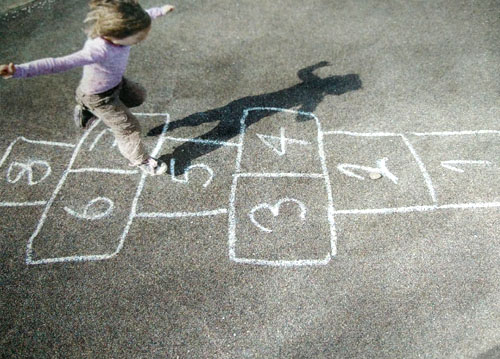Info
It is generally carried out outside: 10 numbered boxes must be drawn on the asphalt (usually with chalk).
In turn, each player throws a pebble into the first square and if the pebble comes out of the boundary lines, their turn ends; otherwise, that player will have to continue on one foot, hopping or placing both feet on the ground in the case of horizontal squares. Thus, he will have to travel the entire journey there and back. If he stumbles, falls or touches the lines of the squares, the next player's turn passes.
The winner is the first person to mark each square with their pebble, making the journey back and forth without accidents.
History
Traditionally the origins of the “campana” are traced back to the times of ancient Rome (a trace of it is still visible today engraved on the pavement of the Roman Forum), when it was played with the game name of Clàudus, that is, of the lame, with evident reference to the rule of hopping from one square to another on one foot.
The game is also known as “mondo”, “week” or “stairway” and if you switch to the board version it transforms into the button game.
There are countless variations of this game, known throughout the world.
In Anglo-Saxon countries it is called Hopscotch, in France Marelles, in Germany Tempelhupfen, in India Ekaria Dukaria. It is also known in Burma where children play a variant which involves jumping with their hands placed on their hips.
Physical abilities developed
Balance control, motor skills coordination, speedy reaction.



